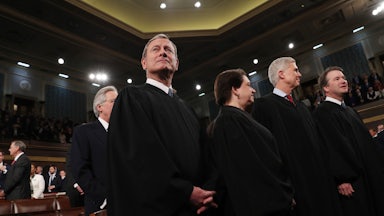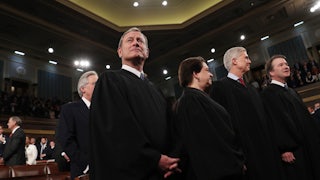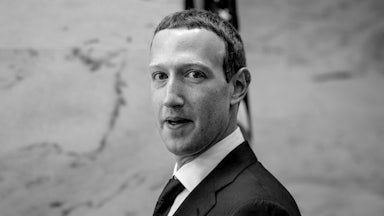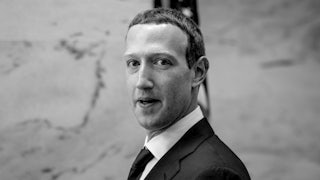This month marked the thirtieth anniversary of Massive Attack’s “Unfinished Sympathy,” not that anyone was keeping track. The song remains, for me at least, the high-water mark of what came to be known as trip hop, a bastard genre of languorous tempos and ponderous atmospherics that was once a staple of coffee shops in Amsterdam before becoming the background music at your local Starbucks. Like punk before it, trip hop was appropriated and commercialized nearly at the point of its inception, confounding its legacy. Chris Kraus claims that punk’s “golden age lasted somewhere between four and eighteen months”; trip hop had at least a few years in the early nineties, before it was eventually stripped of its druggy, underground associations and became our era’s version of lounge music.
I was too young to have been there at the source—too far away, too. The three great trip hop acts—Massive Attack, Tricky, and Portishead—all came from Bristol, England. I knew nothing about this city but it was, like grunge-era Seattle and the Edinburgh of Trainspotting, a fixture in my adolescent firmament of places where life seemed impossibly cool. Listening to trip hop made you want to live in a very specific sort of city: rainy and cold and slightly miserable, where waifish kids found solace in dark clubs shuddering with deep bass lines.
It was an emissary of this world, an English girl named Cat, who introduced my teenage self to trip hop. She returned to school from summer break with a souvenir that was so magically suggestive of Europe’s hidden pleasures that it remains etched in my memory: a blank cassette that had “Portishead Dummy” scrawled on it in pen. I took it home and taped her tape. This was five or six years after the seismic event that was “Unfinished Sympathy,” which was about the time it took for the aftershocks from the center of cultural civilization to reach the far shores of our high school in India. And even then the good news came in corrupted form, on a third-hand recording that gradually began to hiss and warble as we listened to that battered tape again and again and again.
I have been indulging in quite a lot of trip hop these days, not only out of nostalgia (though I have a dominant form of that particular gene) and not only because I have run out of nineties artifacts to listen to over the course of this endless pandemic winter (there is only so much Dinosaur Jr an aging hipster can take). I think it’s because the music still manages to invoke that imaginary city and its culture—the sort of place that has all but vanished from my life as I molder away in my apartment, and that had faded even before the pandemic in other less dramatic ways.
It is difficult to classify trip hop as a genre. The name, suggesting a psychedelic sort of hip hop, isn’t very helpful, having attached itself parasitically to a nebulous beast as it made its way mainstream. The whole point of trip hop, in fact, was its destabilization of category, its mixing of disparate genres: electronica, rap, reggae, soul, dub, post-punk. In this respect it was similar to American hip hop, an all-devouring musical form that could incorporate almost anything into its elastic frame. But this original universalizing tendency was rooted in a hyper-local environment.
Trip hop should really be remembered as the Bristol Scene or the Bristol Sound, a product of a pre-internet era in which popular music was more directly tied to a sense of place. Now that sampling is ubiquitous and all kinds of music are instantly accessible, it can be easy to forget that the very notion of such cross-pollination came to being in cross-pollinated spaces like Bristol, where the club scene met the public housing block. The music there was the motley manifestation of a culture where the tides of immigration had left their residue. As Tricky sings on the title track of Massive Attack’s debut album Blue Lines: “How we live in this existence, just being / English upbringing, background Caribbean.”
The scene was so tightly knit that, yes, Tricky was a founding member of Massive Attack before striking out on his own. Portishead’s Geoff Barrow cut his teeth in the studio working on Blue Lines (he was the group’s assistant or, as the British would call him, its “tea boy”). The different members of the great Bristol trio could sometimes literally sound like the same band: Both Tricky and Portishead used the same Isaac Hayes sample to create two eerily similar songs, “Hell Is Round the Corner” and “Glory Box,” respectively.
Even though these songs were connected at the hip, they also showed the subtle differences between the two acts. Tricky, the scene’s cracked court jester, used the cinematic score on Hayes’s “Ike’s Rap II” to conjure up an apocalyptic vision of street life, cataloging in a sinuous whisper the drugs (“lick a rock on foil”), the clothes (“dress me up in Stussy”), the despair (“the constant struggle ensures my insanity”). Portishead’s Beth Gibbons, meanwhile, was more fragile, damaged, with a gramophone crackle to her voice—a hard-on-her-luck chanteuse channeling Aretha Franklin (“Give me a reason to love you / Give me a reason to be a woman”).
All the sounds of trip hop seemed to be squeezed through its peculiar Bristol prism. The reggae influence on Blue Lines sounds like sunshine filtered through the drizzly gloom of English skies. When Horace Andy, a frequent Massive Attack contributor, sings “I believe in one love” against a stark backdrop of mounting dread, it does not make you feel, as Bob Marley would have it, that every little thing’s going to be alright.
The influence of hip hop—the beats, the sampling, the rapping—is obvious and pervasive but often stretched beyond recognition, such as in Tricky’s cover of Public Enemy’s “Black Steel in the Hour of Chaos,” rendered simply as “Black Steel.” Using a beat of Indian origin and an industrial guitar riff that loops on itself like a Mobius strip, Tricky turns a liberation rap anthem into a thumping good rock track. That it is sung with a silvery polish by a woman, Tricky’s then-partner Martina Topley-Bird, infuses the lyrics (“Here is a land that never gave a damn / About a brother like myself because I never did”) with a solidarity that reaches across lines of both gender and country.
Gender heterogeneity was a hallmark of trip hop, as was racial heterogeneity. The three creative forces behind Massive Attack during that time—Robert “3D” Del Naja, Andrew “Mushroom” Vowles, and Grant “Daddy G” Marshall—were two Black men and a white man who, as DJs and producers, ceded the vocal spotlight to women. “Unfinished Sympathy” is sung by the resplendent Shara Nelson, with the accompanying video featuring her walking down a busy street in Los Angeles. “Protection,” the melancholy title track from the group’s follow-up album, is sung by the shy and introspective Tracey Thorn, who starred in a whimsical Michel Gondry–directed video set in a crowded English housing block. The former vocalist is Black and the latter white, prompting a viewer to wonder: Is this white music or Black music? Well, it is both.
“Unfinished Sympathy” is an especially good example of Massive Attack’s both-ness. The track’s various elements—a relentless dance beat, a swelling orchestral arrangement, a crooning soul singer—should not really work together, but they do, magnificently, producing a music that is somehow both modern and classic. It feels like a jump into the future, into what would become the sound of the nineties, epitomized by the string-laden, dance-inflected albums of Bjork (who dated Tricky and whose first album was produced by Bristol DJ Nellee Hooper). Yet it is also an old-fashioned lover’s lament:
I know that I’ve imagined love before
And how it could be with you
Really hurt me, baby, really cut me, baby
How can you have a day without a night?
You’re the book that I have opened
And now I’ve got to know much more
This is the song I’ve returned to time and again during this pandemic year, on solitary treks across New York that self-consciously mimic Shara Nelson’s lonely walk in the video for “Unfinished Sympathy.” Watching her on that bright evening in Los Angeles, so full of longing, has also inverted my adolescent experience of this music: It is she who is perpetually moving through the golden light of summer while I, like everyone else here, am stuck in a cold and wet city. The music, just as it did back then, serves as a consolation, reminding me that this is what a city is supposed to feel like, and what I am supposed to feel like, too: urgent, alive.
It is also a reminder of what the music of a genuine urban culture sounds like—what distinct ooze bubbles up from a place that is not like other places. It is ironic that trip hop itself is just the sort of mood music—soft percussion, swooning strings—that might now play in a hotel bar in a downtown area that looks like every other downtown area on the planet. But for that, like so much else, I blame the homogenizing impact of the internet. Our music these days could come from anywhere; our cities could be anywhere. I still have never been to Bristol, but at least I know where I can find it.








